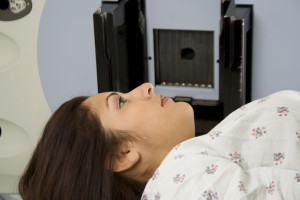AARP Hearing Center
Breast Cancer Patients Get Longer Radiation Than Necessary
By Candy Sagon, December 16, 2014 07:07 AM

Women 50 or older who have lumpectomies for small breast tumors are being given follow-up radiation treatment that lasts nearly twice as long as guidelines recommend, new research finds.
Even more disturbing, the decision to stick with the longer, more expensive treatment may be because it’s more profitable for radiation-treatment centers, a study coauthor contends.
Radiation, which is standard treatment after surgery for early-stage breast cancer tumors, is used to kill any cancer cells remaining after surgery. It usually involves five to seven weeks of daily low-dose treatments. Multiple trials with at least 10 years’ follow-up, however, have found that shortening the duration to three weeks at a higher dose works equally well — and women prefer this because it means less time away from job and/or family.
“For women as patients, it’s much better to have the shorter course,” author Ezekiel Emanuel, M.D., chairman of the Department of Medical Ethics and Health Policy at the University of Pennsylvania, told NPR. “They get done with radiation four weeks early, and for society it’s less expensive. The only person it’s not good for is the radiation oncologist. I think it’s a challenge for them.”
The new study, published December 10 in JAMA, the Journal of the American Medical Association, analyzed data from millions of women. Although the number of women age 50-plus receiving the shorter treatment has increased from about 11 percent in 2008 to 35 percent in 2013, two-thirds are still getting six to seven weeks of radiation.
Among women under 50 and those with more advanced cancers, about 21 percent received the shorter radiation course in 2013, compared with about 8 percent in 2008, the study found.
The American Society for Radiation Oncology has endorsed the shorter course of treatment — called hypofractionated whole breast irradiation — and has pushed for doctors to make it a priority.
Researchers noted that hypofractionated radiation is used for more than 70 percent of breast cancer patients in other countries, including Canada, perhaps because they have fewer radiation centers than the U.S. “Here we have an oversupply of radiation-oncology facilities,” Emanuel told NPR, and a longer course of treatment nets them more money from insurers.
For patients, the study found, fewer weeks of treatment may not affect out-of-pocket insurance expenses, but it still had economic and quality-of-life benefits by reducing time away from work and home.
>> Get discounts on health services with your AARP Member Advantages.
So why are women still getting the long treatment? Radiation oncologists have been taught “for decades” to give low doses of radiation to minimize side effects, Ben Smith, a radiation oncologist at MD Anderson Cancer Center in Houston, told NBC News. “This higher daily dose makes a lot of radiation oncologists nervous, given prior teaching,” he said.
The decision between a shorter, high-dose course of treatment and a longer, lower-dose one needs to be discussed with a woman’s radiation oncologist, Stephanie Bernik, chief of surgical oncology at Lenox Hill Hospital in New York told CBS News. The best thing women can do is “raise the issue with their radiation oncologist” to see if they qualify for a three-week plan.
Photo: Snowleopard1/iStock

Also of Interest:
- So Why Are Waiting Room Magazines So Old?
- 9 Fat-Busting Fall Foods
- Get Involved: Learn How You Can Give Back
- Join AARP: savings, resources and news for your well-being
See the AARP home page for deals, savings tips, trivia and more.































































